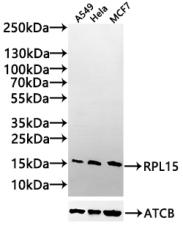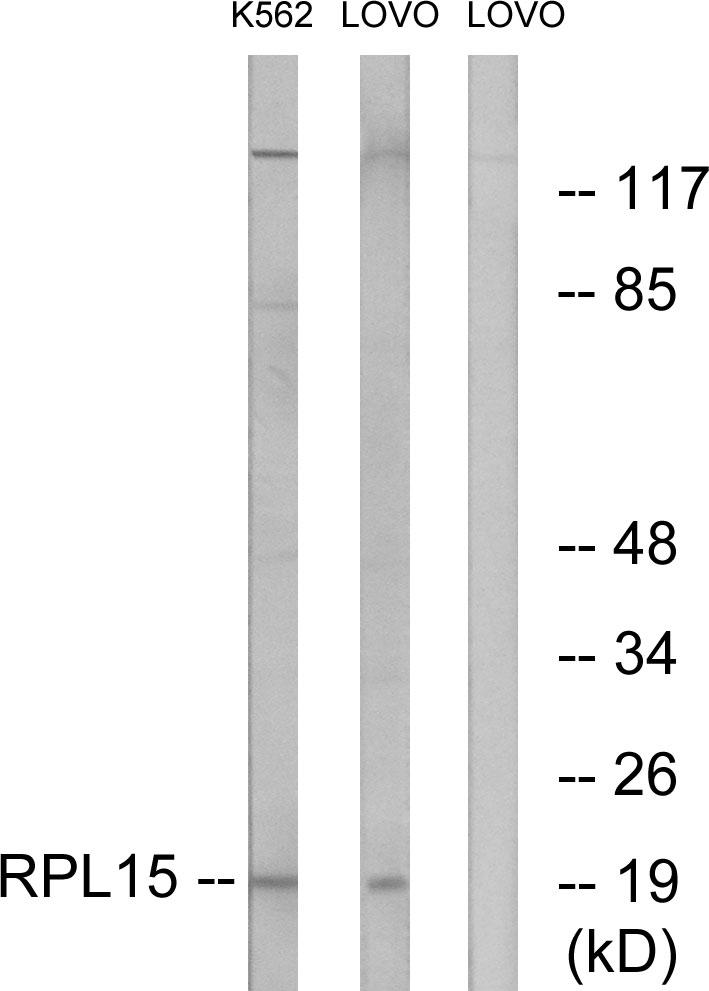RPL15 antibody
GTX101830
ApplicationsWestern Blot, ImmunoHistoChemistry, ImmunoHistoChemistry Paraffin
Product group Antibodies
TargetRPL15
Overview
- SupplierGeneTex
- Product NameRPL15 antibody
- Delivery Days Customer9
- Application Supplier NoteWB: 1:500-1:3000. IHC-P: 1:100-1:1000. *Optimal dilutions/concentrations should be determined by the researcher.Not tested in other applications.
- ApplicationsWestern Blot, ImmunoHistoChemistry, ImmunoHistoChemistry Paraffin
- CertificationResearch Use Only
- ClonalityPolyclonal
- Concentration0.63 mg/ml
- ConjugateUnconjugated
- Gene ID6138
- Target nameRPL15
- Target descriptionribosomal protein L15
- Target synonyms60S ribosomal protein L15; DBA12; EC45; L15; large ribosomal subunit protein eL15; RPL10; RPLY10; RPYL10
- HostRabbit
- IsotypeIgG
- Scientific DescriptionRibosomes, the organelles that catalyze protein synthesis, consist of a small 40S subunit and a large 60S subunit. Together these subunits are composed of 4 RNA species and approximately 80 structurally distinct proteins. This gene encodes a ribosomal protein that is a component of the 60S subunit. The protein belongs to the L15E family of ribosomal proteins. It is located in the cytoplasm. This gene shares sequence similarity with the yeast ribosomal protein YL10 gene. Although this gene has been referred to as RPL10, its official symbol is RPL15. This gene has been shown to be overexpressed in some esophageal tumors compared to normal matched tissues. Transcript variants utilizing alternative polyA signals exist. As is typical for genes encoding ribosomal proteins, there are multiple processed pseudogenes of this gene dispersed through the genome. [provided by RefSeq]
- Storage Instruction-20°C or -80°C,2°C to 8°C
- UNSPSC12352203
References
- A ribosome-related signature in peripheral blood CLL B cells is linked to reduced survival following treatment. Sbarrato T et al., 2016 Jun 2, Cell Death DisRead more





